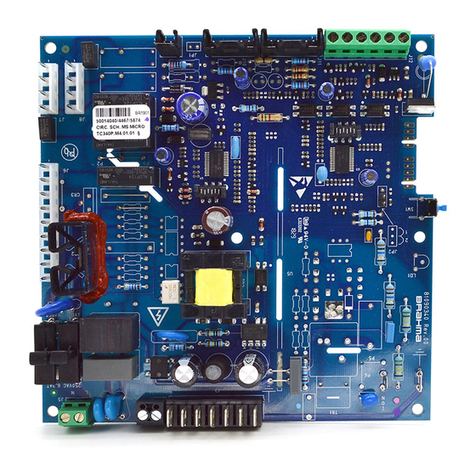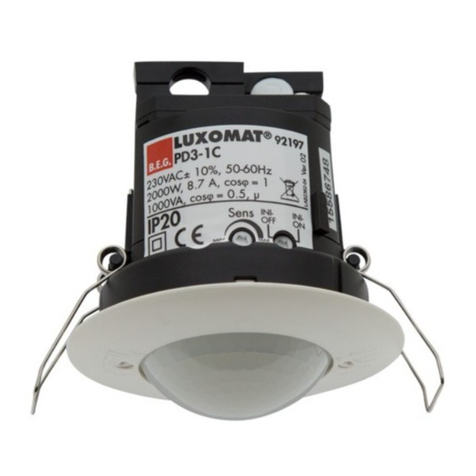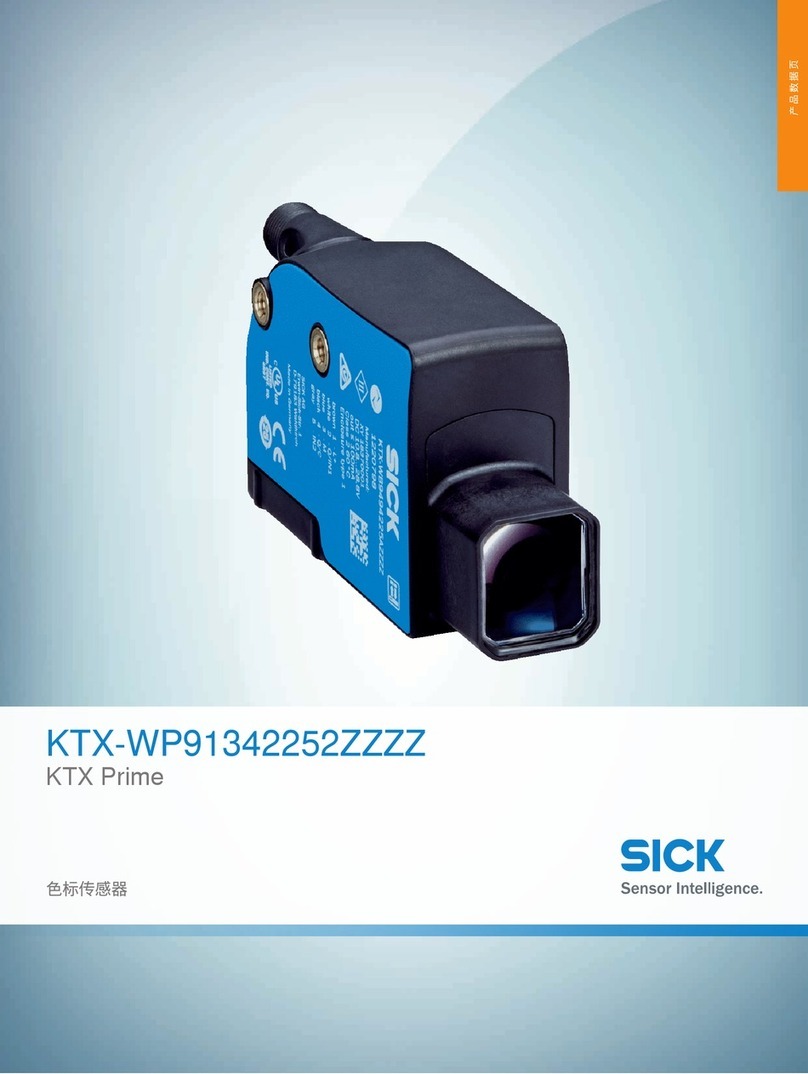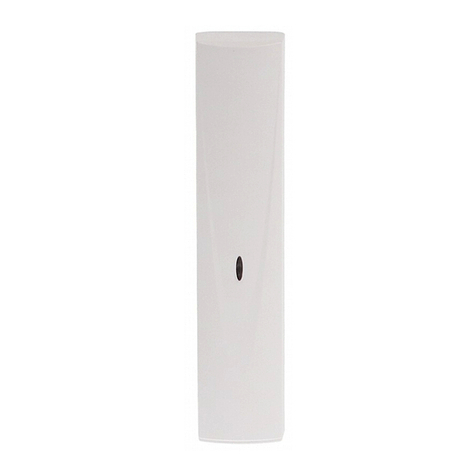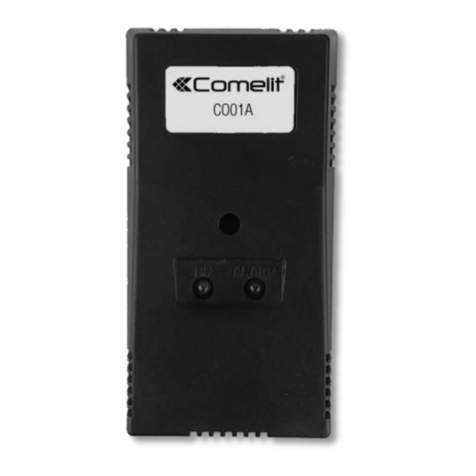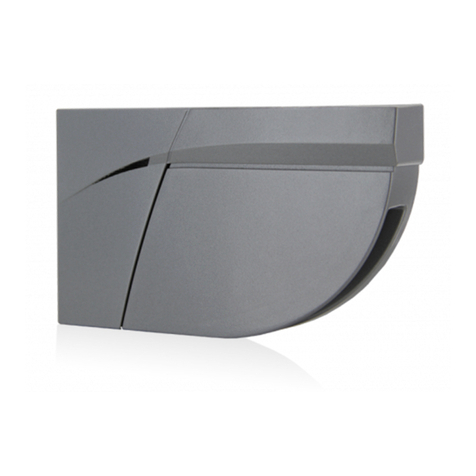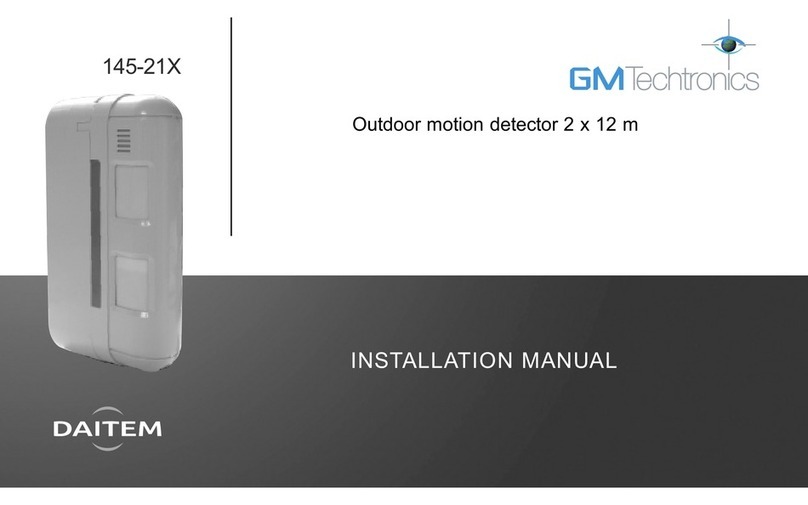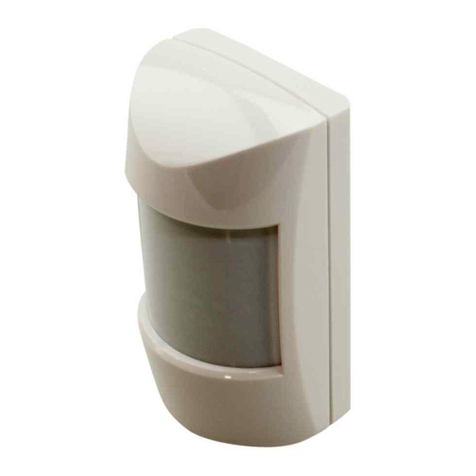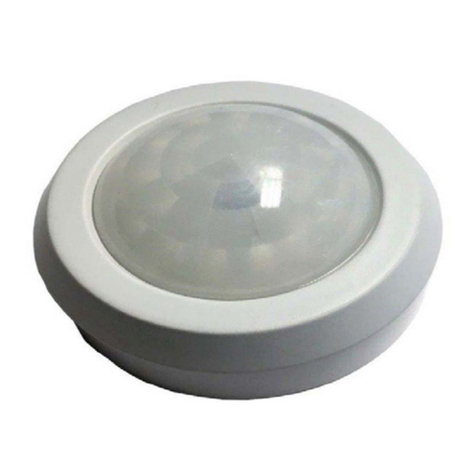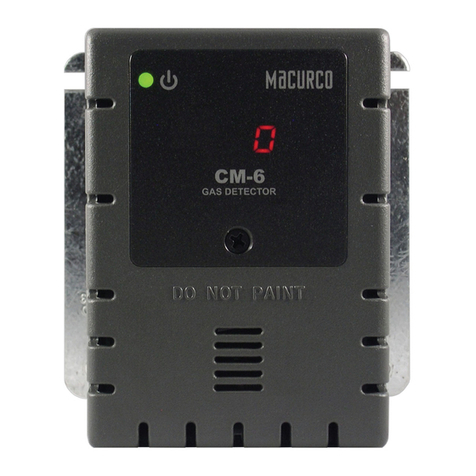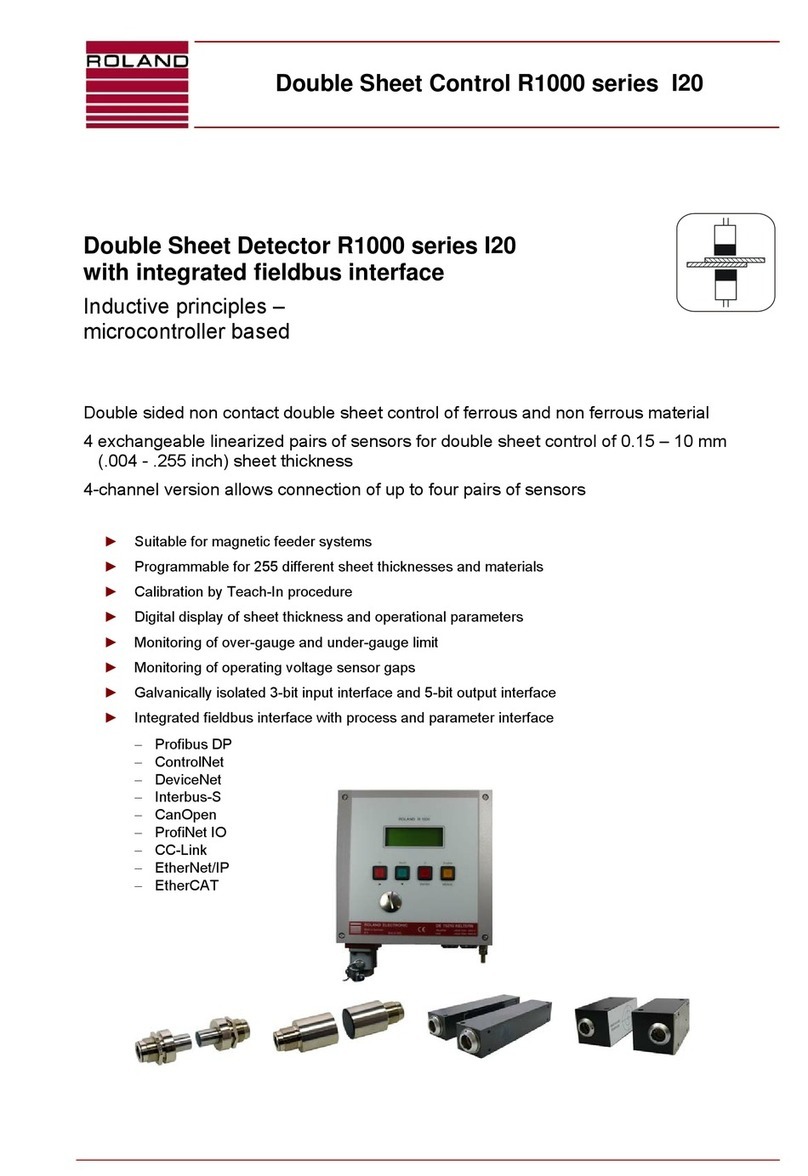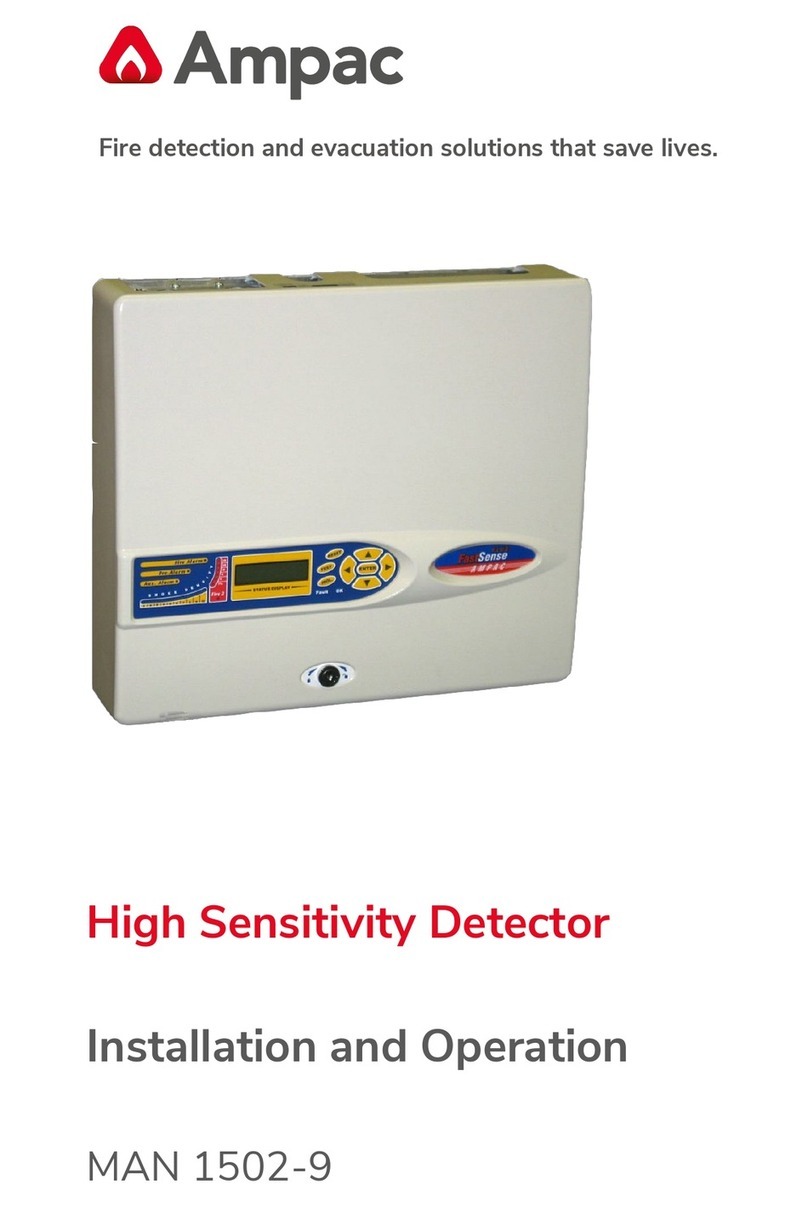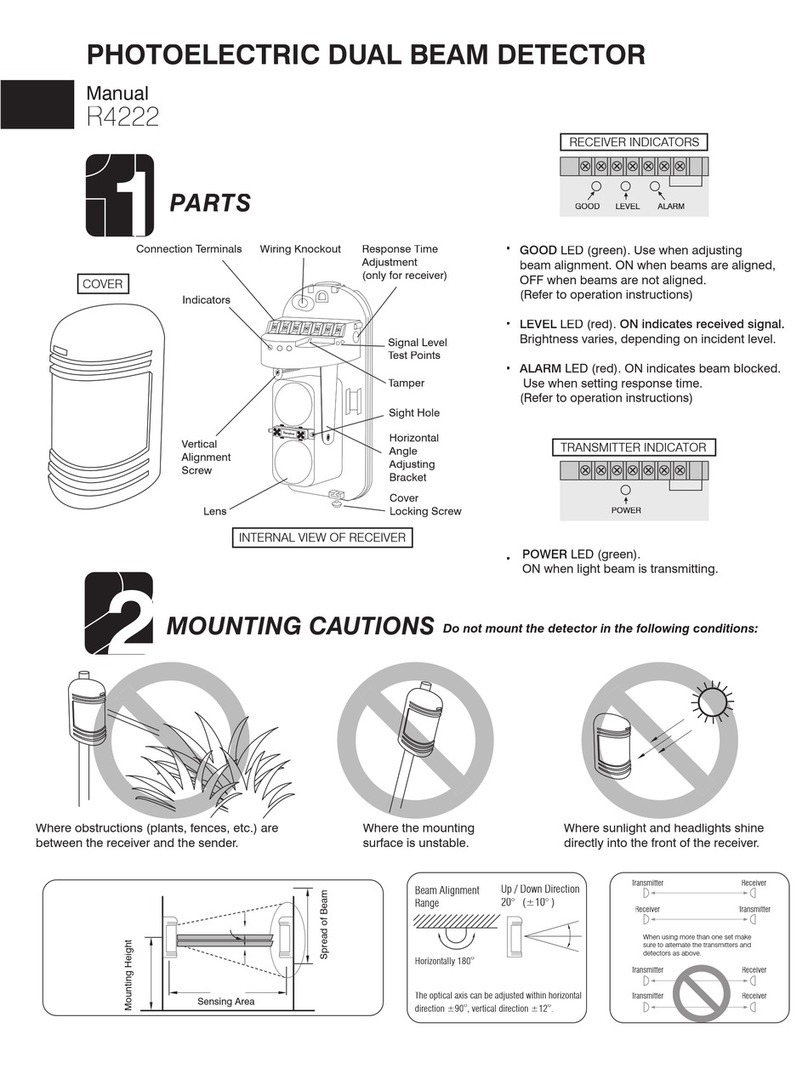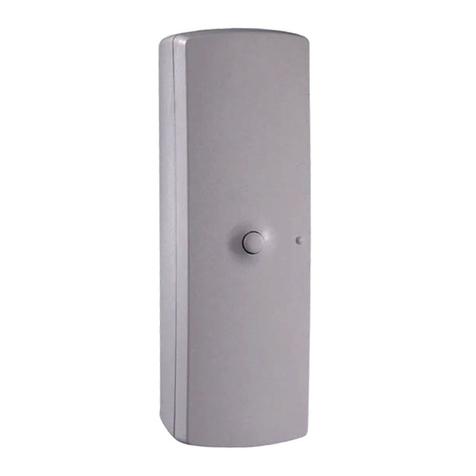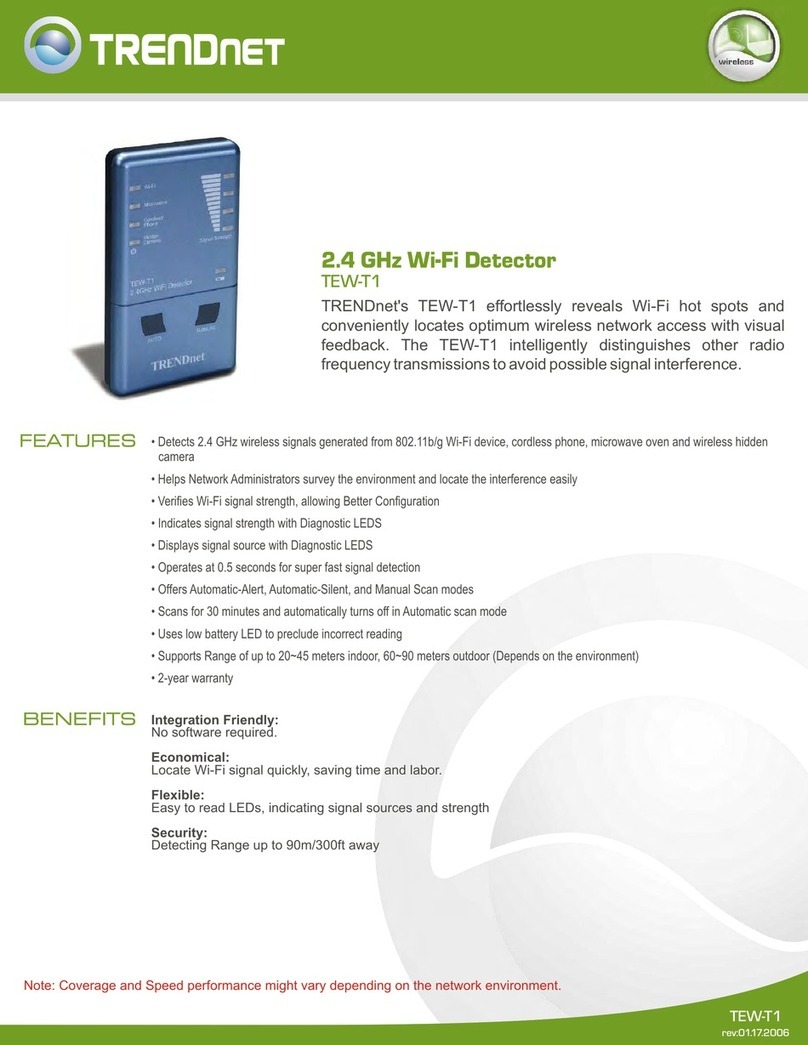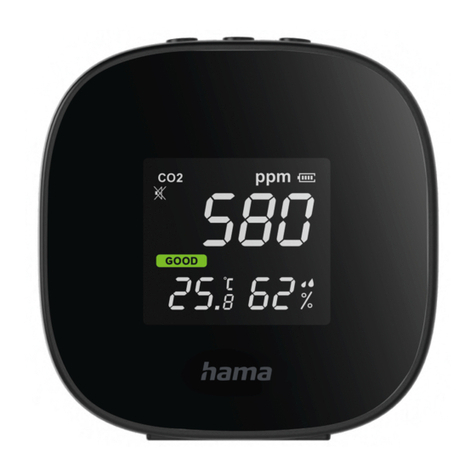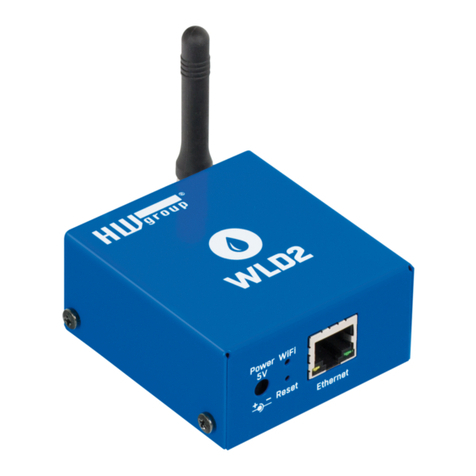BRAHMA RE3 User manual

4071_r06 1/4
FLAME DETECTOR FOR
GAS
TYPE RE3
DESCRIPTION
The RE3 control is suitable to verify the presence of flame
on gas burners. In fact it can use either a UV phototube or
an electrode to exploit the flame rectification effect
(ionization).
FEATURES
−in accordance with EN 60730;
−electrical service life at max. declared loading >
250.000 operations;
−compact and easy installation;
−connecting socket with screws or fast-on terminals
(types A, B, N and T);
−signalization with LEDs of different colour: green
(POWER) and red (FLAME).
MAIN APPLICATIONS
The RE3 flame detector is mainly used for industrial
applications and for the installation of semiautomatic
ignition and control systems, when it is necessary to control
simultaneously and sequentially several burners.
The presence of LEDs to signalise the operation also
permits the use of RE3 control simply as flame detector.
OPERATION
Supply is signalled by the turning on of the green coloured
LED (POWER) fitted on the front of the plastic enclosure. A
second LED, red coloured, placed next to the first one,
turns on when the flame detection has occurred. This event
corresponds to the switching on of the independent
contacts available in output.

2/4 4071_r06
OVERALL DIMENSIONS
Socket A B (code 18210130) Socket T
Socket N (18210095)
Fig.1
This control can use the connecting sockets with screw
terminals mod. A B, N or socket mod. T. for fast - on
terminals, which couples with lateral bolted enclosure.
ACCESSORIES
The users’ different requirements regarding flame detection
for gas systems, can be met by using the following probes
of our production:
- UV1 standard phototube (Fig.2);
- UV1/H high sensitivity phototube:
Case: nylon
Case diameter: mm 22
Case length: mm 85
Cable length: mm 600 (standard)
- UV2/N (Fig.3):
Case: nylon
Case diameter: mm 17
Case length: mm 76
Cable length: mm 600 (standard)
Fig.2
Fig.3
As regards the phototube life, we suggest to replace it after
10.000 hours to avoid the danger of a “flame on” signal
also after the flame has been extinguished, which is likely
to happen when the tube gets too old.
DETECTION ELECTRODE
The detection electrode we produce can be supplied in
different shapes and dimensions (see Fig.4).
Fig.4
TECHNICAL DATA
- Supply: 220-230V-50/60Hz
on request: 240V-50/60Hz
110-120V-50/60Hz
- Operating temperature: 0 ÷ 60°C
- Humidity: 95% max. at 40°C
- Case Protection Degree: IP40
- Power consumption in running: 3 VA
- Contact rating: 5A 250 V AC ( cosϕ= 1.0)
3A 250 V AC ( cosϕ= 0.4)
5A 30 V DC
- External Fuse (F): 50 mA T
- Minimum ionization current: 0,5µA
- Recommended ionization current:
with UV tube: >15µA
with electrode: >5µA
- Reaction time: <1s
Weight:
with AB socket 280 g
with B socket 300 g
with T socket 250 g
with N socket 290 g

4071_r06 3/4
CONSTRUCTION
The plastic material made enclosure protects the control
from possible damages depending on crashes, openings,
dust deposit, contact with outside ambient.
Two LEDs of different colour, GREEN for power on and
RED for flame on, fitted on the upper side of the enclosure,
permit an immediate identification of the state of burner
and control; a version without signalling LEDs is also
available.
DIRECTIONS FOR INSTALLATION
−Connect and disconnect the control only with supply off.
−The control can be assembled in every position.
−Avoid exposure to dripping water.
−Ventilation with the lowest temperature ensures the
longest life of the control.
−Make sure that you are using the correct type and code
before installing or replacing the control.
ELECTRICAL INSTALLATION
−Every contact must be protected with a fuse of the fast
blow type suitable to the loads connected;
−Before starting the control, check cables and
connections carefully (see Fig.5). Wrong
connections can damage the control and
compromise the safety of the application;
−Avoid placing the detection cable close to power or
ignition cables;
−Use a detection cable as short as possible (max.
recommended length <5m);
−A suitable degree of protection must be guaranteed;
−The relevant electrical safety standards must be
respected.
Fig.5
CHECKING AT START
Always check the control before the first start and also after
a long period of system off. Before any ignition attempt
make sure that the combustion chamber is free from gas.
Then check that the level of the flame signal is sufficient
(see Fig.6a and 6b for the measuring).
Fig.6
Fig.7 shows the diagram suitable to the installation of a
semiautomatic system for gas burners. For the flame
detection, both an ionization electrode or a phototube can
be used.
Acting on the manual start button PM (with two contacts
normally open) supply is given to the TR ignition
transformer and the EV 1 gas valve; the manual pressure
on the button must be kept until the flame is built and
stable.
APPLICATION EXAMPLES
Fig.7
By releasing the button PM, the ignition transformer is
turned off and the operation continues until one of the
following situations occurs:
- action on the manual stop button PA;
- intervention of the thermostat T;
- flame failure.
In any situation, the operation can be reset only by manual
intervention on start button PM.
In the same picture is also represented a duty example of
the second available contact, to detect the flame in
distance.
Fig.8 represents two connection diagrams for using the
RE3 flame detector with the control box for automatic gas
burners, model CM391 belonging to the EUROBOX series
(see the relevant leaflet).
DETECTION
PROBE
BLUE
NOTE1
NC
COM
NA
NA
COM
NC
5A
5A
UV
MADE IN ITALY
BRAHMA TYPE RE3
NOTE1: WIREMARKEDWITHNUMBER 8
DET. PROBE
NC
COM
NA
NA
COM
NC
5A
5A
MADE IN ITALY
BRAHMA TYPE RE3

4/4 4071_r06
The diagram in Fig.8a differs from the one in Fig.8b for the
presence of fan control and air pressure switch. This
connection permits the ignition of two burners in sequence,
with cross checking of the “flame on” state. A contact of the
internal relay of RE3 is used to check the efficiency of the
detector to prevent the beginning of the ignition cycle if the
detector doesn’t operate correctly.
The ignition of burner 2 occurs only after the ignition of
burner 1 and, as the flame detection is cross - checked
between CM391 and RE3, the turning off of one burner
causes also the immediate turning off of the other one.
BRAHMA S.p.A.
Via del Pontiere, 31
37045 Legnago (VR)
Tel. +39 0442 635211 - Telefax +39 0442 25683 22/06/2017 Subject to amendments without notice
http://www.brahma.it
E-mail : brahma@brahma.it
(a)
BURNER 1
BURNER 2
LIVE
NEUTRAL
(b)
Fig.8
ATTENTION
-
> Company Brahma S.p.A. declines
any responsibility for any damage resulting from the
Customer's interfering with the device.
.
LIVE
NEUTRAL
NOTES ABOUT PRODUCT DISPOSAL The device
contains electronic components and cannot therefore be
disposed of as normal household waste. For the disposal
procedure, please refer to the local rules in force for special
waste.
Other BRAHMA Security Sensor manuals
